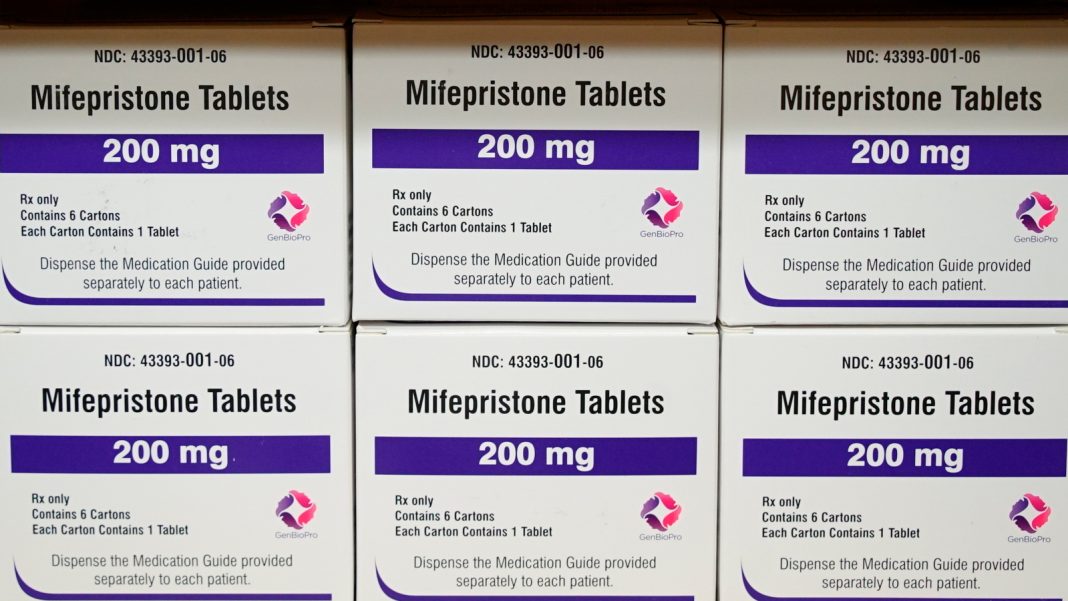Supreme Court Decision Safeguards Access to Abortion Pill, but Concerns Remain Over Medication Abortion
Introduction:
The U.S. Supreme Court’s recent decision to reject a lawsuit seeking to restrict nationwide access to the abortion pill mifepristone has been met with applause from experts and advocacy groups. However, concerns persist about the future of medication abortion and the overall regulation of medications by the Food and Drug Administration (FDA).
Access to Medication Abortion:
The abortion pill regimen, which involves the use of mifepristone and another pill, is recommended for pregnancies up to 11 weeks and has become the most common form of abortion care in the U.S. It is not only cost-effective but also accounted for 63% of U.S. abortions in 2023, up from 53% in 2020, according to a study by the Guttmacher Institute. This growth highlights the importance of maintaining access to medication abortion.
Impact of the Supreme Court Decision:
The Supreme Court’s ruling ensures that women in states with restricted or ceased abortion care can still access the abortion pill through mail services. This aspect of the decision has been hailed as the most significant impact. Dr. Reshma Ramachandran, an assistant professor at Yale University School of Medicine, emphasizes that limiting access to mifepristone would exacerbate existing disparities in reproductive healthcare.
Advantages of Medication Abortion:
In addition to its accessibility, medication abortion offers several benefits compared to surgical abortions. Women who choose the abortion pill can return to their daily lives more quickly and experience fewer days of bleeding and lower risk of blood loss. The need for physician visits is also reduced, making it a convenient option for many patients.
Ongoing Challenges:
While the Supreme Court’s decision is a relief for advocates of reproductive rights, concerns remain about future challenges to medication abortion. The American Civil Liberties Union warns that anti-abortion politicians may attempt to push the case to an extremist judge in Texas, potentially limiting access to medication abortion care. The Guttmacher Institute also emphasizes the need for vigilance in protecting mifepristone and ensuring safe self-management of abortions.
Wider Impact on Abortion Access:
Another pending case before the Supreme Court, Moyle v. U.S., could have a broader impact on abortion access. This case centers on Idaho’s total abortion ban, and a decision will determine if the federal law protecting emergency medical treatment supersedes the state’s ban. The outcome will have significant implications for abortion access across the country.
FDA Regulation and Judicial Intervention:
At the core of the FDA v. Alliance for Hippocratic Medicine case decided by the Supreme Court is the concern over judges intervening in the FDA’s decisions. Experts worry that allowing judges without clinical or technical expertise to weigh in on scientific decisions could have far-reaching consequences beyond mifepristone. The FDA’s role in drug approval and ensuring safety is crucial, and politicizing the process would be detrimental.
Preserving FDA Authority:
The Supreme Court’s ruling preserves the FDA’s authority in drug regulation and prevents the potential politicization of its approval process. Experts highlight the rigorous standards followed by the FDA in approving mifepristone, given the politicization of abortion care. A different ruling could have set a dangerous precedent and undermined the FDA’s ability to determine drug safety and effectiveness.
Implications for Drug Development:
Had the Supreme Court ruled differently, it could have had catastrophic effects on drug development and regulation in the U.S. The industry may have been reluctant to invest in drug development if there was a risk that court challenges could invalidate FDA approvals. This would not only threaten the development of new drugs but also jeopardize investment in essential treatments for various conditions.
Conclusion:
While the Supreme Court’s decision to safeguard access to mifepristone is a significant victory, concerns remain regarding the future of medication abortion and the broader regulation of medications by the FDA. It is crucial to remain vigilant in protecting reproductive healthcare and ensuring that judges do not undermine the expertise and authority of regulatory agencies like the FDA. The preservation of FDA’s role in drug regulation is essential for public health and the development of safe and effective treatments.


